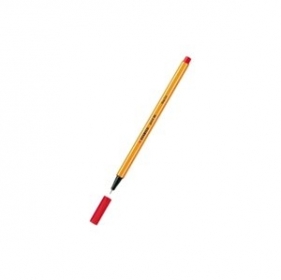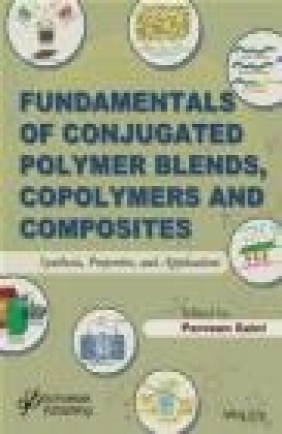Conducting Polymer Based Blends and Nanocomposites
Parveen Saini
Conducting Polymer Based Blends and Nanocomposites
Parveen Saini
- Producent: John Wiley
- Rok produkcji: 2015
- ISBN: 9781118549490
- Ilość stron: 800
- Oprawa: Twarda
Niedostępna
Opis: Conducting Polymer Based Blends and Nanocomposites - Parveen Saini
Since their discovery in 1977, the evolution of conducting polymers has revolutionized modern science and technology. These polymers enjoy a special status in the area of materials science yet they are not as popular among young readers or common people when compared to other materials like metals, paper, plastics, rubber, textiles, ceramics and composites like concrete. Most importantly, much of the available literature in the form of papers, specific review articles and books is targeted either at advanced readers (scientists/technologists/engineers/senior academicians) or for those who are already familiar with the topic (doctoral/postdoctoral scholars). For a beginner or even school/college students, such compilations are bit difficult to access/digest. In fact, they need proper introduction to the topic of conducting polymers including their discovery, preparation, properties, applications and societal impact, using suitable examples and already known principles/knowledge/phenomenon. Further, active participation of readers in terms of "question & answers," "fill-in-the-blanks," "numerical" along with suitable answer key is necessary to maintain the interest and to initiate the "thought process." The readers also need to know about the drawbacks and any hazards of such materials. Therefore, I believe that a comprehensive source on the science/technology of conducting polymers which maintains a link between grass root fundamentals and state-of-the-art R&D is still missing from the open literature.Foreword by Sir Richard Friend xv Preface xvi Part 1: Multiphase Systems: Synthesis, Properties and Applications 1 Conjugated Polymer-based Blends, Copolymers, and Composites: Synthesis, Properties, and Applications 3 Parveen Saini 1.1 Introduction 4 1.2 CPs/ICPs-Based Blends 7 1.2.1 Classification of CPs/ICPs-Based Blends 8 1.3 CPs/ICPs-Based Copolymers (CCPs) 11 1.3.1 Types of CPs/ICPs-Based Copolymers 11 1.3.2 Sub-Classification of Linear or Graft BCPs 20 1.4 CPs/ICPs-Based Composites/Nanocomposites/Hybrids 23 1.4.1 Categorization of CPs/ICPs-Based NCs 26 1.5 Interpenetrating/Semi-Interpenetrating Polymer Network (IPN/SIPN) 29 1.6 Synthesis of CPs/ICPs-Based BLNs, CCPs, and CMPs/NCs/HYBs 30 1.6.1 Synthesis of Undoped CPs-Based BLNs 30 1.6.2 Synthesis of Conjugated Polymers-Based Copolymers 39 1.6.3 CPs/ICPs-Based CMPs/NCs 52 1.7 Applications of CPs/ICPs-Based BLNs, CCPs, and CMPs/NCS/HYBs 63 1.7.1 ICP-Based Systems 63 1.7.2 CPs-Based Systems 63 1.8 Conclusions 79 Acknowledgments 80 References 80 2 Progress in Polyaniline Composites with Transition Metal Oxides 119 Gordana iri -Marjanovi 2.1 Introduction 119 2.2 PANI/Transition Metal Oxide Composites 120 2.2.1 PANI Composites with Oxides of the Copper Group of Transition Metals 121 2.2.2 PANI Composites with Oxides of the Zinc Group of Transition Metals 121 2.2.3 PANI Composites with Oxides of the Scandium Group of Transition Metals 124 2.2.4 PANI Composites with Oxides of the Titanium Group of Transition Metals 126 2.2.5 PANI Composites with Oxides of the Vanadium Group of Transition Metals 131 2.2.6 PANI Composites with Oxides of the Chromium Group of Transition Metals 132 2.2.7 PANI Composites with Oxides of the Manganese Group of Transition Metals 137 2.2.8 PANI Composites with Oxides of Iron, Cobalt, and Nickel Groups of Transition Metals 140 2.3 Conclusions and Outlook 151 Abbreviations 152 References 153 3 Conjugated-Polymer/Quantum-Confined Nanomaterials-Based Hybrids for Optoelectronic Applications 163 Anuushka Pal, Parveen Saini, and Sameer Sapra 3.1 Introduction 164 3.2 Quantum-Confined Nanomaterials (QCNs) 165 3.2.1 Inorganic Quantum-Confined Nanomaterials (QCNs) 166 3.2.2 Organic Quantum-Confined Nanomaterials (QCNs) 167 3.3 Synthetic Approaches for Quantum-Confined Nanomaterials (QCNs) 168 3.3.1 Synthesis of Inorganic Quantum-Confined Nanomaterials 169 3.3.2 Synthesis of Organic Quantum-Confined Nanomaterials 174 3.3.3 Optical Properties 176 3.4 Conjugated-Polymer/Quantum-Confined Nanomaterials (CP/QCN) Hybrids 183 3.4.1 Methodologies for Making Conjugated-Polymer/Inorganic QCN Hybrids 183 3.4.2 Chemical Methods 184 3.5 Optoelectronic Applications of Hybrids 190 3.5.1 Hybrid Solar Cell 190 3.5.2 Light-Emitting Diodes 201 3.5.3 GQDs/Conjugated-Polymer-Based Counter Electrode for Dye-Sensitized Solar Cells 208 3.6 Outlook and Perspective: Current Challenges and Future Scope/Prospects 210 Acknowledgments 211 References 211 4 Graphene/Conjugated Polymer Nanocomposites for Optoelectronic and Biological Applications 229 Tapas Kuila, Yu Dong Sheng, and Naresh Chandra Murmu 4.1 Introduction 230 4.2 Graphene/Conjugated Polymer Nanocomposites 231 4.2.1 Preparation of Graphene/Conjugated Polymer Nanocomposites 232 4.2.2 Different Types of Conjugated Polymer Nanocomposites and Their Properties 234 4.2.3 Characterizations of Graphene/Conjugated Polymer Nanocomposites 252 4.3 Applications of Graphene/Conjugated Polymer Nanocomposites 263 4.3.1 Optoelectronic Application 263 4.3.2 Biological Applications 268 4.4 Conclusions and Future Scope 270 Acknowledgements 271 References 271 Part 2: Energy Harvesting and Storage Materials 5 Conjugated Polymers-Based Blends, Composites and Copolymers for Photovoltaics 283 Ashish Dubey, Parveen Saini, and Qiquan Qiao 5.1 Introduction 284 5.2 Organic Photovoltaic (OPV) Cells 284 5.3 OPV Device Architecture and Working Mechanism 287 5.4 Solar Cell Terminologies and Characterization Parameters 290 5.4.1 Air Mass (AM) 290 5.4.2 Open-Circuit Voltage (Voc) 291 5.4.3 Short Circuit Current Density (Jsc) 292 5.4.4 Fill Factor (FF) 292 5.4.5 Power Conversion Efficiency (PCE) ( ) 293 5.4.6 Quantum Efficiency (QE) 294 5.5 CPs-Based Blends, Composites and Copolymers for OPVs 295 5.5.1 Polymer-Fullerene BHJ Blends 296 5.5.2 Organic Inorganic Composites/Hybrids 303 5.5.3 Polymer/Carbon Nanotube Composites 307 5.5.4 Polymer/Graphene-Based Composites 312 5.6 Conjugated Copolymers for PVs 314 5.6.1 Donor Acceptor Type Alternating Copolymers 315 5.6.2 Block Copolymers with Built in p-Type Donor and n-Type Acceptor 320 5.7 Conclusions: Current Challenges and Prospects 326 Acknowledgements 327 References 327 6 Conducting Polymer-Based Nanocomposites for Thermoelectric Applications 339 Qin Yao, Lidong Chen, and Sanyin Qu 6.1 Introduction 340 6.2 Synthesis Methods 346 6.2.1 In Situ Polymerization 346 6.2.2 Solution Mixing 354 6.2.3 Mechanical Mixing 359 6.3 TE Properties of CP/Inorganic Nanocomposites 361 6.3.1 CP/CNT Composite 362 6.3.2 CP/Graphene Composites 368 6.3.3 CP/Metal Composites 371 6.3.4 CP/Metal Compounds Composites 373 6.4 Summary 376 References 377 7 Conjugated-Polymer/Inorganic Nanocomposites as Electrode Materials for Li-Ion Batteries 379 Qingsheng Gao, Lichun Yang, and Ning Liu 7.1 Introduction 379 7.2 Nanocomposites of Conjugated Polymer/Inorganic as Cathode Materials 383 7.2.1 LiFePO4 383 7.2.2 MnO2 386 7.2.3 V2O5 393 7.3 Nanocomposites of Conjugated Polymers/Inorganic as Anode Materials 402 7.3.1 Silicon 402 7.3.2 SnO2 405 7.3.3 Other Conjugated Polymer-Based Anode Materials 410 7.4 Conclusion 412 Acknowledgments 413 References 413 8 Polypyrrole/Inorganic Nanocomposites for Supercapacitors 419 Peng Liu 8.1 Introduction 419 8.2 Polypyrrole/Carbon Nanocomposites 420 8.2.1 Carbon Nanoparticles 421 8.2.2 Carbon Nanofibers 421 8.2.3 Carbon Nanotubes 422 8.2.4 Graphene and Derivatives 427 8.3 Polypyrrole/Metal Oxide Nanocomposites 432 8.3.1 Manganese Oxides 432 8.3.2 Titanium Oxides 435 8.3.3 Ruthenium Oxides 436 8.3.4 Other Metal Oxides 436 8.4 Polypyrrole/Clay Nanocomposites 437 8.5 Other Polypyrrole/Inorganic Nanocomposites 438 8.6 Polypyrrole Ternary Composites 439 8.7 Conclusion and Perspectives 443 Acknowledgments 444 References 444 Part 3: Advanced Materials for Environmental Applications 9 Intrinsically Conducting Polymer-Based Blends and Composites for Electromagnetic Interference Shielding: Theoretical and Experimental Aspects 451 Parveen Saini 9.1 Introduction 451 9.2 Shielding Phenomenon 453 9.2.1 Theoretical Shielding Effectiveness 454 9.2.2 Experimental Shielding Effectiveness 467 9.2.3 Complex Permittivity and Permeability 469 9.2.4 Shielding Materials and Design Considerations 472 9.2.5 Synthesis of ICPs-Based Hybrids (Blends and Composites) 475 9.2.6 Electrical Properties of ICPs-Based Blends and Composites 481 9.2.7 EMI Shielding Performance of ICPs-Loaded Blends and Composites 483 9.2.8 EMI Shielding Performance of ICP-Matrix-Based Composites 492 9.2.9 EMI Shielding and Microwave Absorbing Performance of ICPs/Filler Hybrid-Loaded Polymer Matrix Composites 505 9.3 Conclusions 507 References 508 10 Anticorrosion Coatings Based on Conjugated Polymers 519 M. Federica De Riccardis 10.1 Introduction 519 10.2 Basic Concepts of Corrosion 522 10.3 Corrosion Prevention 524 10.4 Corrosion Tests 527 10.4.1 Immersion Tests 528 10.4.2 Cabinet Tests 529 10.4.3 Electrochemical Tests 530 10.5 Conjugated Polymers as Anticorrosion Layers 538 10.6 Conjugated Polymers Nanocomposite as Anticorrosion Layers 552 10.7 Conclusions 574 References 575 11 Conjugated Polymer-Based Composites for Water Purification 581 Jiaxing Li, Yongshun Huang, and Dadong Shao 11.1 Introduction 582 11.2 Adsorption Phenomenon 583 11.2.1 Adsorption Isotherms 584 11.2.2 Adsorption Kinetics 588 11.2.3 Adsorption Thermodynamics 589 11.3 PANI-Related Composites in Water Purification 591 11.3.1 PANI/Inorganic Composites 592 11.3.2 PANI/Organic Composites 594 11.4 PPy-Related Composites in Water Purification 601 11.4.1 PPy/Inorganic Composites 601 11.4.2 PPy/Organic Composites 602 11.5 Miscellaneous Conjugated Polymer Composites in Water Purification 606 11.6 Conclusion 609 Acknowledgment 609 References 609 Part 4: Sensing and Responsive Materials 12 Conjugated Polymer Nanocomposites-Based Chemical Sensors 621 Pradip Kar, Arup Choudhury, and Sushil Kumar Verma 12.1 Introduction 622 12.2 Conjugated Polymer Nanocomposites as Chemical Receptor 626 12.3 General Methods for Preparation of Conjugated Polymer Nanocomposite 631 12.3.1 Ex-situ Method 632 12.3.2 In-situ Method 642 12.4 Influence of Properties of Conjugated Polymer by Interaction with Nano-Filler 644 12.5 Fabrication of Conjugated Polymer Nanocomposite Layer/Film for Sensor 647 12.5.1 Electrochemical Deposition 647 12.5.2 Pellet Preparation 648 12.5.3 Dip Coating 649 12.5.4 Spin Coating 651 12.5.5 Drop Coating 652 12.5.6 Film Casting 653 12.5.7 Printing 654 12.5.8 Other Methods 655 12.6 Chemical Sensing Performance of Conjugated Polymer-Based Nanocomposites 656 12.6.1 Sensing by Conjugated Polymer/Organic Nanocomposites 656 12.6.2 Sensing by Conjugated Polymer/Inorganic Nanocomposites 658 12.7 Mechanism of Chemical Sensing by Conjugated Polymer Nanocomposite 670 12.7.1 Strong Chemical Interaction with the Conjugated Polymer 672 12.7.2 Weak Physical Interaction with the Conjugated Polymer 674 12.7.3 Weak Physical Interaction with the Nanomaterial 677 12.8 Challenges and Prospects 679 References 681 13 Conjugated Polymer Nanocomposites for Biosensors 687 Deepshikha Saini 13.1 Introduction 687 13.2 Synthesis of Conducting Polymer Nanocomposites 690 13.2.1 Conducting Polymer Nanocomposites with Carbon Nanotubes (CNTs) 691 13.2.2 Conducting Polymer Nanocomposites with Metal Nanoparticles 694 13.2.3 Conducting Polymer Nanocomposites with Metal Oxides 696 13.2.4 Conducting Polymer Nanocomposites with Metal Phthalocyanines and Porphyrins 698 13.2.5 Conducting Polymer Nanocomposites with Biological Materials 700 13.2.6 Conducting Polymer Nanocomposites with Graphene 702 13.3 Current and Emerging Applications of Conducting Polymer Nanocomposites in Biosensors 706 13.3.1 Catalytic Biosensors 707 13.3.2 Bioaffinity Sensor 714 13.4 Conclusions and Outlook 719 References 722 14 Polyaniline Nanocomposites for Smart Electrorheological Fluid Applications 731 Jianbo Yin and Xiaopeng Zhao 14.1 Introduction 731 14.2 PANI as Filler for ER Fluids 734 14.3 Core/Shell-Structured PANI Nanocomposites for ER Fluids 737 14.3.1 PANI-Coated Core/Shell-Structured Nanocomposites 737 14.3.2 PANI-Encapsulated Core/Shell-Structured Nanocomposites 743 14.4 Pani-Intercalated Nanocomposites for ER Fluids 747 14.4.1 PANI/Clay Nanocomposites 747 14.4.2 PANI/Mesoporous Silica Nanocomposites 750 14.5 Conclusions 752 Acknowledgments 752 References 752 Index 759
Szczegóły: Conducting Polymer Based Blends and Nanocomposites - Parveen Saini
Tytuł: Conducting Polymer Based Blends and Nanocomposites
Autor: Parveen Saini
Producent: John Wiley
ISBN: 9781118549490
Rok produkcji: 2015
Ilość stron: 800
Oprawa: Twarda
Waga: 0.67 kg




















